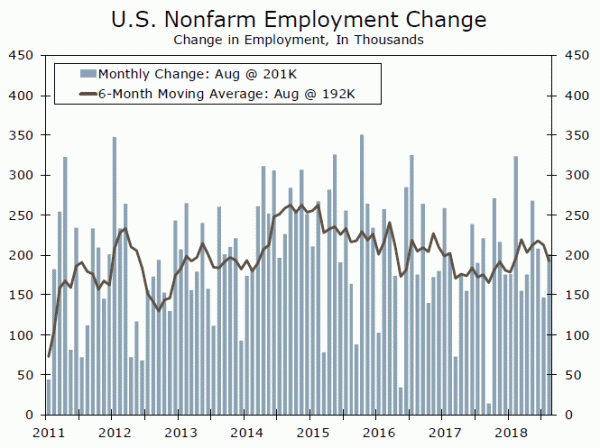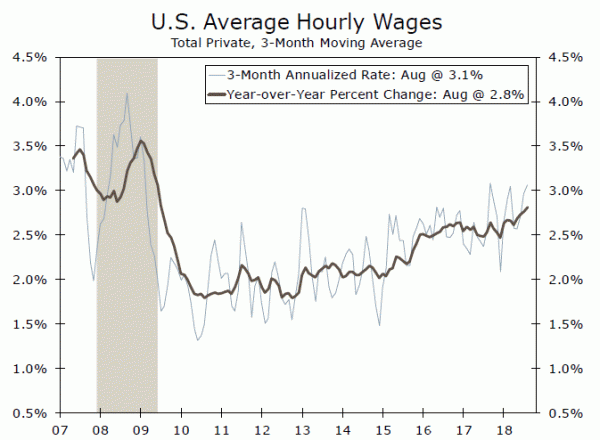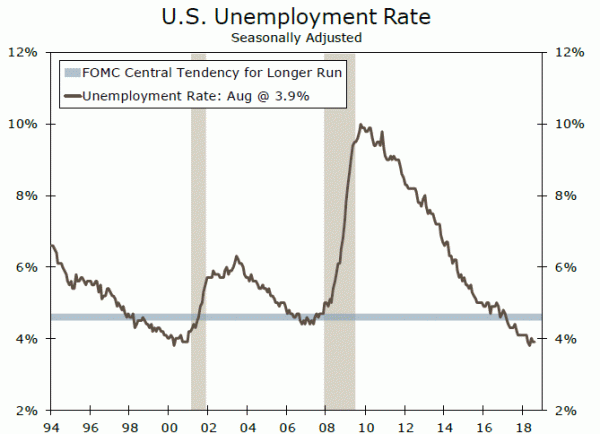Employers added 201,000 jobs in August. That marked an improvement versus July, but the overall trend in hiring is slowing as employers are increasingly having trouble finding workers. Wages are rising as a result.
Slower Job Growth but Wages Pick Up
Hiring in the United States bounced back in August, with employers adding 201,000 jobs. Gains were somewhat mixed. Job growth was solid in professional & business services, education & health and transportation, but manufacturing employment slipped by 3,000 jobs, breaking a 12-month run of gains.
Revisions were negative, with the number of new jobs added the previous two months revised down 50,000. Despite August’s pickup in hiring compared to July, the overall trend in job growth has been slowing. Over the past three months, job gains have averaged 185,000, compared to 218,000 in the first half of the year.
Difficulty finding workers rather than a lack of demand is contributing to the slowdown, in our view. The share of small businesses reporting they have at least one job hard to fill rose to the highest level in the survey’s 45-year history in August, while JOLTS data from the BLS show the job opening rate similarly hovering near record highs.
Wage growth is picking up as a result of employers increasingly having trouble finding workers. Average hourly earnings rose 0.4% in August and are up 2.9% over the past year. Although that remains weaker than the pace registered in previous cycles, the pace is picking up and wage growth is now running at the strongest pace of this expansion.
The extent that rising wages lead to higher inflation, however, remains the ultimate test for the Fed. While some FOMC members remain “puzzled” that wages have not picked up more, core inflation measured by the Fed’s PCE deflator is back to 2.0% and likely to remain there as businesses increasingly report a willingness to pass on rising input costs.
Further Labor Market and Fed Tightening to Come
The unemployment rate was unchanged in August at 3.9%, but down 0.5 percentage points over the past year. We expect to see downward pressure on the unemployment rate continue in the months ahead. Employment growth is running around a 1.6% pace compared to labor force growth of only 0.7% over the past year. Labor force growth is set to remain subdued with the wave of Baby Boomers reaching retirement age, while participation among prime-age workers (25-54) has been more or less flat since the start of the year after having risen steadily the prior two years.
Although Fed officials, including Chair Powell, have recognized the uncertainty surrounding the “natural rate” of unemployment in real time, there is little doubt the labor market is tightening. Strong hiring and strengthening wage gains should keep the Fed on track to raise rates not only at its meeting later this month, but also again in December.















